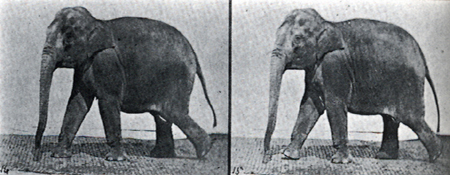 |
||
| Why It Works | ||
| HOME The Art of Memory Origin Myth Vivid Imagery Memory Is Personal Your Inner Monty Python The Use of Places Poetry and Song The Grid System Why It Works The Number Mnemonic Free Ass-sociate Conclusion |
When neuroscientists scan the brains of experiment participants engaged in memory tasks, disparate areas are activated in tandem -- areas involving perception and emotion and language and everything else. A memory is not a discrete thing like a notecard, filed away in a certain place in your head. It is a confluence of multiple processes, images, and associations. Our brains function very differently from anything you will find in your computer, such as a CPU or a hard drive, where bits of information occupy discrete locations on a magnetic disk. But for all its complexity, the brain does have this in common with your computer: Memory storage space is limited. Because it can only handle so much information, your brain has to find ways of compressing information into the smallest possible volume, both to take up the minimum of storage and to make it faster to transmit and process. Computers have all kinds of algorithms for compressing information by finding data that is common to separate things and then having those things share that data, rather than recording the data multiple times -- thus freeing up memory space. Compressing information by finding redundancies is basic to information theory. Interestingly, it is also basic to the theory of humor, as formulated a century ago by Sigmund Freud. There is the saying “brevity is the soul of wit,” but Freud actually determined that it is economy that makes things funny: Saying a lot with a little. In fact, if you examine most any really funny joke, you will find that much of its power resides in how much information, how many associations, are conveyed in a small little package. Jokes clue us in to the mind’s constant effort to find ways of compressing information: Our delight at a good joke is just our brain finding a particular piece of information particularly nutritious – because it contains a lot, in a small package. Metaphors are the building blocks of thought and memory, because, like jokes, they are economical. For example, a country is like a person, both have a body, organs, “arms,” and a head that leads the whole. Metaphors are good to think with, and one reason is that that they enable us to think about big complex subjects (such as nations) using what we already know (our bodies). All that is different is the smaller details, so these are what the brain focuses on learning. (For more on metaphor and how they structure the way they think, see the groundbreaking work of cognitive scientists George Lakoff and Mark Johnson, especially Metaphors We Live By.) It follows from this that memory naturally involves the pairing of unrelated things -- i.e., associations. Pairing unrelated things is crucial in designing one’s own systems of artificial memory. This always must be kept in mind, because there is a natural temptation to pair things that are related. But natural coincidences don’t work for memory. Artificial pairings do. If you are studying art history, for example, it may seem like a great idea to utilize a familiar art gallery as a memory space. This is a mistake, though. Since art naturally belongs in galleries, its presence in your mental gallery won't have the contrast and drama needed to make it memorable, and the contents will blur and fade. Galleries make great memory spaces, but not for anything related to art. (The logic is universally extended: Your garage makes a great memory space, but not for anything related to cars or mechanics; churches work great for anything but religion.) Pick a memory space that is as wildly inappropriate to the subject matter as you can imagine. (Even if – especially if – it means mentally sullying your church with unseemly mental imagery like a naked people and animals.) Your retrieval scheme is simply a matter of what links to what. And in memory, as in rhetoric and drama and other arts, contrast is key. Linking unrelated things creates firm and stable structures. You might think this would create a confused and haphazard mind, but in fact the opposite is true. Imagine angled or horizontal girders extending across the span of a big building, giving stability to the upright pillars carrying the weight. A mind in which different subject matter and interests were kept distinct and isolated, separate corners or islands of knowledge, would fall apart. Structure is the interrelationship among all things. It may look haphazard, but the more things cross and criss-cross, the more unrelated things link up with each other, the more firmly it will all hold together and, paradoxically, the more powerful your memory for each individual part will be. Another metaphor than criss-crossing girders in a building is the criss-crossing of people in a village square, that is, the regular exchange, the intercourse, of people in a society. Society is association. And learning is association: creating a society of ideas in the brain. The association, or sociability, of ideas has often been allegorized as the coming together – that is, the intercourse – of people. It is no wonder that sexuality is such a powerful symbol. For Freud, everything was a symbol of sex. But sex is also a symbol, a symbol of nothing other than the processes of the mind – that is, association. |
|
All material copyright 2006
Eric Wargo